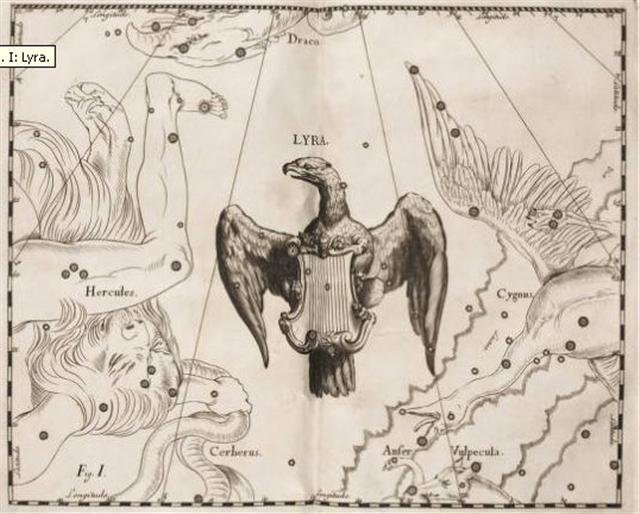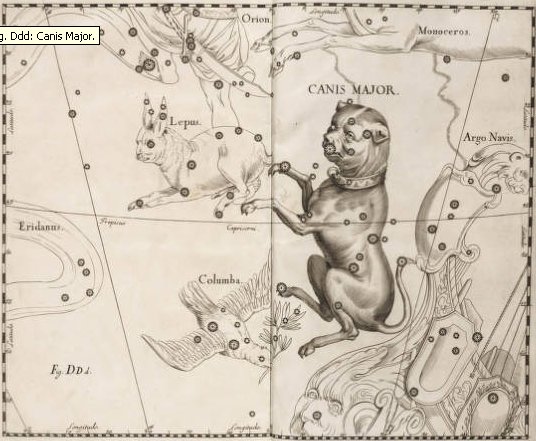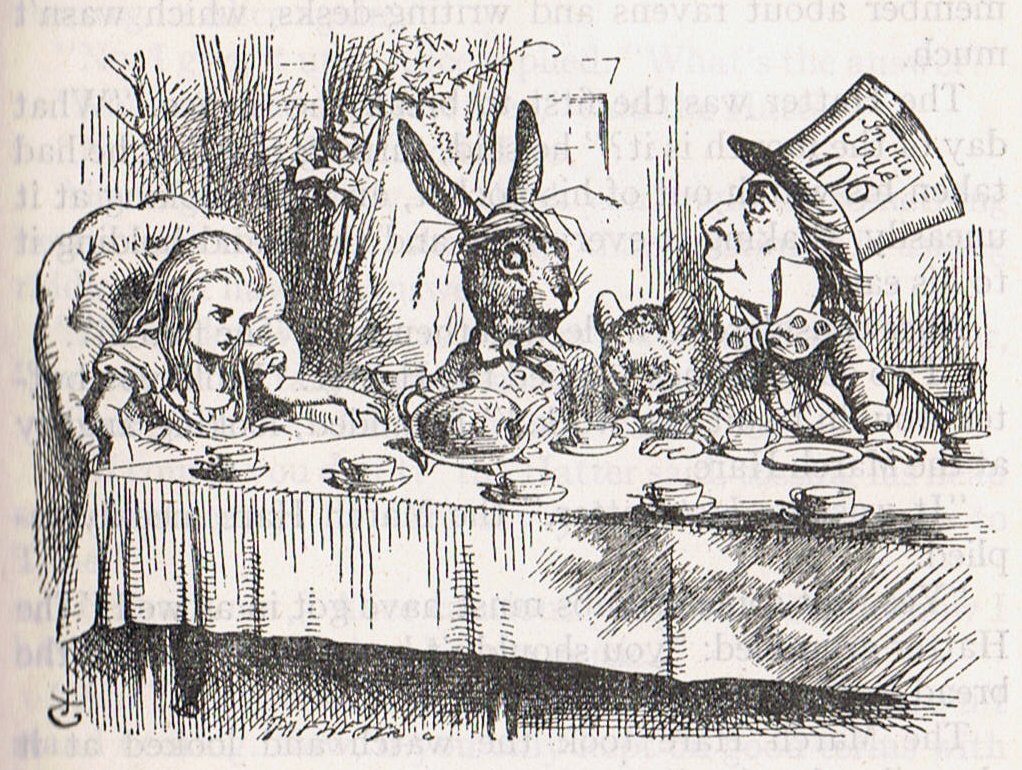143. Once again. Day 403 was day number 7 after
Hamal (396):
 |
 |
 |
 |
|
Cb1-1 (393) |
Cb1-2 |
Cb1-3 |
Cb1-4
(366 + 30) |
|
E tupu -
ki roto |
o te hau tea |
ki te henua -
te maro |
|
INVISIBLY CLOSE TO THE SUN
(helical dates): |
|
*210 |
*211 |
THUBAN
(Dragon) |
*213 |
|
Oct 17 (290 = 107 + 183) |
18 |
19 (*212 = *29 + 183) |
20 |
|
ºOct 13 (*23 + 183) |
14 (*211 - 4) |
15 (288) |
16 |
|
'Sept 20 (*183) |
21 (264 = 287 - 37 |
EQUINOX |
23 |
|
"Sept 6 (249 = 66 + 183) |
7 |
8 (*171 = *354 - 183 |
9 (252 = 293 - 41) |
|
AUG 14 |
15 (227 = 264 - 37) |
16 (*148) |
17 |
|
206 = 290 - 84 |
207 = 227 - 20 |
208 = 25 + 183 |
209 = 213 - 4 |
|
... The ubiquitous 288 was also
(cfr JANUARY 3, *288) the day
number the Pope Gregory XIII had
decided on for launching his new
calendar:
... The Julian calendar day
Thursday, 4 October 1582 was
followed by the first day of the
Gregorian calendar, Friday, 15
October 1582 (the cycle of
weekdays was not affected) ...
But at the time of rongorongo -
after the precession had
corrected his error in not going
all the way down to Caesar, only
down to 325 AD (the Council of
Nicaea) - day 288 (= 325 - 37)
had become the proper place for
Antares to rise with the Sun.
Tangaroa Uri 15 ("October
15) was when the Royal Double
Canoe was reaching Easter Island
... |
|
CLOSE TO THE FULL MOON (and
nakshatra dates): |
|
Al Sharatain-1 /
Ashvini-1 /
Bond-16 (Dog) /
Mahrū-sha-rishu-ku-1
(Front of the Head of Ku)
SHERATAN |
*28 |
ALRISHA (The
Knot) |
HAMAL |
|
April 17 (107) |
18 |
19 (*29) |
20 |
|
ºApril 13 (*23) |
4-14 (104) |
15 |
16 |
|
'March 21 (*366) |
22 (*1) |
23 |
JULIAN EQUINOX |
|
"March 7 (66) |
8 |
9 (*354 = *368 - *14) |
10 |
|
FEBR 12 (43) |
13 (*330) |
2-14 (45) |
15 |
|
364 + 25 = 389 |
390 = 207 + 183 |
25 = 45 - 20 |
26 = 30 - 4 |
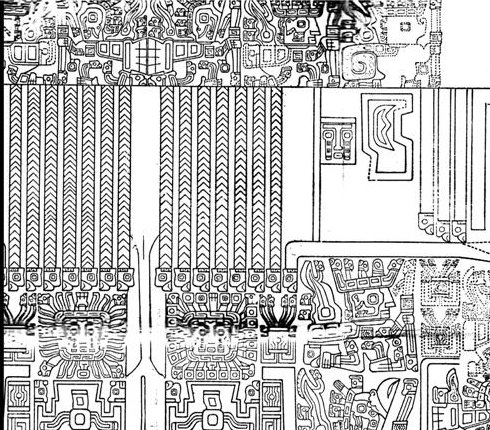
.. The ground, the food-giving
earth, was Pachamama; the
moon, Paximama
...
|
Counting the tresses from right to left: |
|
1 |
26 |
182 |
1 |
29 |
214 |
|
2 |
26 |
2 |
30 |
|
3 |
26 |
3 |
31 |
|
4 |
25 |
4 |
34 |
|
5 |
26 |
5 |
31 |
|
6 |
27 |
6 |
30 |
|
7 |
26 |
7 |
29 |
|
Total = 396 = 182 + 214 |
|
 |
 |
 |
|
 |
 |
 |
 |
|
Cb1-5 |
Cb1-6 (350 + 48) |
Cb1-7 |
Cb1-8 |
Cb1-9 |
Cb1-10 |
Cb1-11
(403) |
|
rutua - te pahu - rutua te
maeva |
atua rerorero |
atua hiko ura |
hiko o tea |
ka higa te ao ko te henua
ra ma te hoi atua |
|
INVISIBLY CLOSE TO THE SUN
(helical dates): |
|
Oct 21 |
ARCTURUS |
23 (*216) |
|
24 |
25 |
26 |
27 (300 = 216 + 84) |
|
ºOct 17 |
18 (291) |
19 |
20 |
21 (*214) |
22 |
23 |
|
24 |
'Sept 25
(*188) |
26 |
27 |
28 |
136
* 2 |
30 (273 = 3 * 91) |
|
10 |
"Sept
11 (*174) |
12 |
(4 * 64) |
14 |
15 |
16 |
|
AUG 18 |
19 |
20 (*152) |
21 |
22 |
23 |
24 (236 = 53 + 183) |
|
210 |
211 = 291 - 80 |
212 |
213 |
214 |
215 |
216 = 236 - 20 |

... Mons Maenalus,
at the feet of Boötes,
was formed by Hevelius,
and published in his
Firmamentum
Sobiescianum; this
title coinciding with
those of neighboring
stellar groups bearing
Arcadian names. It is
sometimes, although
incorrectly, given as
Mons Menelaus, -
perhaps, as Smyth
suggested, after the
Alexandrian astronomer
referred to by Ptolemy
and Plutarch. The
Germans know it as the
Berg Menalus;
and the Italians as
Menalo. Landseer has
a striking
representation of the
Husbandsman, as he
styles Boötes, with
sickle and staff,
standing on this
constellation figure. A
possible explanation of
its origin may be found
in what Hewitt writes in
his Essays on the
Ruling Races of
Prehistoric Times:
The Sun-god thence
climbed up the
mother-mountain of the
Kushika race as the
constellation Hercules,
who is depicted in the
old traditional
pictorial astronomy as
climbing painfully up
the hill to reach the
constellation of the
Tortoise, now called
Lyra, and thus attain
the polar star Vega,
which was the polar star
from 10000 to 8000 B.C.
May not this modern
companion constellation,
Mons Maenalus, be from a
recollection of this
early Hindu conception
of our Hercules
transferred to the
adjacent Bootes?
|
|
CLOSE TO THE FULL MOON (and
nakshatra dates): |
|
April 21 |
22 (*32) |
MIRA |
|
24 |
25 |
26 (116) |
27 |
|
(107) |
ºApril
18 (*28) |
19 |
20 |
21 (111) |
22 |
23 |
|
3-25 |
26 (*5 = *32 - 27) |
27 |
28 |
29 (88) |
30 |
'March 31 |
|
3-11 |
12 (*357 = 366 + 71 - 80) |
13 |
3-14 (73) |
15 |
16 |
"March
17 |
|
2-16 |
17 (112 - 64 = 48) |
18 |
19 |
20 |
21 (52) |
FEBR
22 (403 - 350) |
|
27 |
28 = 32 - 4 |
29 |
30 |
31 |
32 |
33 = 53 - 20 |
|
At the
silent bird in glyph 403 was FEBRUARY 22
(→ 2 * 111) and the
day before the day which in
Roman times was named
Terminalia (the end
station). 403 - 53 (FEBRUARY
22) = 350 and Gb1-11 (403)
- 53 = 350 (Ca13-7 → 137 as
in May 17):
 |
 |
 |
|
Ca13-1 (344) |
Ca13-2 |
Ca13-3 |
|
Kua haga te tagata |
kua haga |
e
kua noi |
|
*344 |
March 1 (*345) |
*346 |
|
DEC 26 (*280) |
27 |
28 |
|
CLOSE TO THE FULL
MOON (and nakshatra
dates): |
|
Aug 29 (241) |
*162 |
*163 |
|
JUNE 26 (177 = 241 -
64) |
27 |
28 (*99) |
 |
 |
 |
|
Ca13-4 |
Ca13-5 |
Ca13-6 |
|
tagata ma te
kihikihi |
koia ra kua oho |
|
March 3 (*347) |
*348 |
*349 |
|
DEC 29 |
30 (364) |
31 (*285) |
|
CLOSE TO THE FULL
MOON (and nakshatra
dates): |
|
Sept 1 (244) |
Wings-27 (Snake)
ALKES |
ANA-TIPU-4
(Upper-side-pillar -
where the guards
stood)
DUBHE
|
|
JUNE 29 (*100) |
30 (181) |
JULY 1 |
... Thus
the regular old Roman
year ended with
Februarius 23 and it
was 350 nights long, 25
fortnights. Then
followed 5 extra nights,
or as the Romans saw it
5 + 1 = 6 nights in
order to include 'March
1, the first day of the
new regular year ...
|
Beyond glyph 403 and day 300 - 64 = 236 (AUGUST
24) the Old Sun Bird (Mua, Moan) fell silent.
Mua = 'in front' and Muri = 'at the
stern' were words south of the equator, but Moan
was in the north, where the Mayas lived. Antares was
at the end of summer north of the equator but at the
beginning of summer in the south; Antares =Ana-mua
and Aldebaran = Ana-muri.
 |
 |
 |
 |
|
13
Mac (260) |
14
Kankin |
15
Moan (300) |
|
BREAK (paxih) |
 |
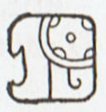 |
 |
 |
|
16 Pax (320) |
17
Kayab |
18 Cumhu |
19
Vayeb (365) |
And therefore the Sun had to be reborn:
...
The
state of the tree loomed large in their
thoughts, because it came about at the same
time the head of One Hunaphu was put in the
fork. The Xibalbans said among themselves:
'No one is to pick the fruit, nor is anyone
to go beneath the tree', they said. They
restricted themselves, all of Xibalba held
back.
It isn't clear which is the
head of One Hunaphu; now it's exactly the
same as the fruit of the tree. Calabash came
to be its name, and much was said about it.
A maiden heard about it, and here we shall
tell of her arrival. And here is the account
of a maiden, the daughter of a lord named
Blood Gatherer.
And this is when a maiden
heard of it, the daughter of a lord. Blood
Gatherer is the name of her father, and
Blood Moon is the name of the maiden. And
when he heard the account of the fruit of
the tree, her father retold it. And she was
amazed at the account: I'm not acquainted
with that tree they talk about. It's fruit
is truly sweet! they say, I hear, she said.
Next, she went all alone and arrived where
the tree stood. It stood at the Place of
Ball Game Sacrifice. What? Well! What's the
fruit of this tree? Shouldn't this tree bear
something sweet? They shouldn't die, they
shouldn't be wasted. Should I pick one? said
the maiden.
And then the bone spoke; it
was there in the fork of the tree: Why do
you want a mere bone, a round thing in the
branches of a tree? said the head of One
Hunaphu when it spoke to the maiden. You
don't want it, she was told. I do want it,
said the maiden. Very well. Stretch out your
right hand here, so I can see it, said the
bone. Yes, said the maiden. She stretched
out her right hand, up there in front of the
bone. And then the bone spit out its saliva,
which landed squarely in the hand of the
maiden. And then she looked in her hand, she
inspected it right away, but the bone's
saliva wasn't in her hand. It is just a sign
I have given you, my saliva, my spittle.
This, my head, has nothing on it - just
bone, nothing of meat. It's just the same
with the head of a great lord: it's just the
flesh that makes his face look good. And
when he dies, people get frightened by his
bones. After that, his son is like his
saliva, his spittle, in his being, whether
it be the son of a lord or the son of a
craftsman, an orator. The father does not
disappear, but goes on being fulfilled.
Neither dimmed nor destroyed is the face of
a lord, a warrior, craftsman, an orator.
Rather, he will leave his daughters and
sons. So it is that I have done likewise
through you. Now go up there on the face of
the earth; you will not die. Keep the word.
So be it, said the head of One and Seven
Hunaphu - they were of one mind when they
did it ... (Popol Vuh)

|
Manus Catenata
(*358) |
Sirrah (*366 = 118 + 248) |
Achernar (*23) |
6 |
Hamal (*30) |
|
354 = 84 + 270 |
84 + 278 = 362 = 2 * 181 |
384 = 84 + 300 |
11 |
396 = 350 + 46 |
| 8 |
Head of the Fly = 35 Arietis (*39 = *30 + 9) |
Right Wing = 39 Arietis (*40 = *30 + 10) |
Bharani = 41 Arietis (*41.4) |
| 7 |
404 = 350 + 54 (= 378 / 7) |
405 = 350 + 55 |
406 = 350 + 56 |
 |
 |
 |
 |
|
Cb1-12 (404) |
Cb1-13 |
Cb1-14 (350 +
56) |
Cb1-15 (407) |
|
manu rere -
kua rere ga manu
- ki te ragi |
eaha te nuku
erua |
koia kua huki |
e
niu tu |
|
INVISIBLY CLOSE
TO THE SUN
(helical dates): |
|
ρ Lupi (221.0),
TOLIMAN = α
Centauri
(221.2), π
Bootis (221.8),
ζ Bootis (221.9) |
31 Bootis
(222.0),
YANG MUN (South
Gate) = α Lupi
(222.1),
RIJL AL AWWA
(Foot of the
Barker) = μ
Virginis
(222.5), ο
Bootis (222.9) |
IZAR (Girdle) =
ε Bootis
(223.0),
109 Virginis,
α Apodis (No
Feet)
(223.3), μ
Librae (223.8) |
Al Zubānā-14a
/
Visakha-16 /
Root-3 (Badger)
ZUBEN ELGENUBI
= α Librae
(224.2), ξ
Bootis, ο Lupi
(224.5) |
|
Oct 28 |
29 |
30 |
31 (304) |
|
AUG 25 |
26 |
27 |
28 (240 = 304 -
64) |
|
CLOSE TO THE
FULL MOON (and
nakshatra
dates): |
|
μ Arietis
(39.4),
HEAD OF THE FLY
= 35 Arietis
(39.6),
KAFFALJIDHMA = γ
Ceti,
θ Persei (39.8) |
π Ceti, ο
Arietis (40.0),
ANGETENAR (Bend
in the River) =
τ¹ Eridani,
μ Ceti
(40.2),
RIGHT WING = 39
Arietis
(40.9) |
Bharani-2 /
Stomach-17
(Pheasant)
π Arietis
(41.2),
MIRAM = η Persei
(41.3),
BHARANI
= 41 Arietis
(41.4),
τ² Eridani, σ
Arietis (41.7) |
TA LING (Great
Mound) = τ
Persei
(42.4) |
|
April 29 (4-29) |
30 |
May 1 (121) |
2 (*42) |
|
FEBR 23 (404 -
350 = 54) |
BIS-SEXTUM |
25 (239 -
183) |
26 (57 = *42 -
*1 + 80 - 64) |
|
...
The leap day was
introduced as
part of the
Julian reform.
The day
following the
Terminalia
(February 23)
was doubled,
forming the 'bis
sextum -
literally
'double sixth',
since February
24 was 'the
sixth day before
the Kalends of
March' using
Roman inclusive
counting (March
1 was the 'first
day'). Although
exceptions
exist, the first
day of the
bis sextum
(February 24)
was usually
regarded as the
intercalated or
'bissextile' day
since the third
century.
February 29 came
to be regarded
as the leap day
when the Roman
system of
numbering days
was replaced by
sequential
numbering in the
late Middle Ages
... |
|
The sequence of
star dates in
the text seems
here to make a
jump ahead with
1 place, because
*366 = 365 + 1
and from Mira
(*33) to Bharani
(*41) there were
not 8 but only 7
days (glyphs).
April 29
→ 4 * 29
= 116 could
allude to Cb1-10
where the 'fist'
uplifted in
front should
mean 'nothing
has as yet been
counted'. |
In view of the above we should compare
with the extraordinary glyphs preceding Rogo
in Gb6-26:
 |
 |
 |
 |
|
Gb6-21 (403) |
Gb6-22 (229 + 175) |
Gb6-23 |
(177 = 6 * 29½) |
|
τ Puppis (102.2), ψ7 Aurigae (102.4) |
Mash-mashu-sha-Risū-9 (Twins of the Shepherd?)
θ Gemini (103.0), ψ8 Aurigae
(103.2),
ALHENA
= γ
Gemini (103.8), ψ9
Aurigae (103.9) |
ADARA (Virgins)
= ε Canis Majoris
(104.8) |
ω Gemini (105.4),
ALZIRR (Button) = ξ Gemini
(105.7), MULIPHEIN =
γ Canis Majoris
(105.8), MEKBUDA
(Conctracted) = ζ
Gemini (105.9) |
|
July 1 |
2 |
3 (*104) |
4 (185) |
|
°June 27 (178 = 118 + 60) |
28 |
29 (*100) |
SIRIUS (177 + 4) |
| 'June 4 |
5 |
6 (*77) |
7 (158) |
|
"May 21 |
22 |
23 (*63) |
24 (143) |
|
APRIL 28 (118 = 2 * 59) |
29 |
30 (*40) |
MAY 1 (11 * 11) |
| 98 |
99 |
100 |
101 |
|
CLOSE TO THE
FULL MOON (and
nakshatra
dates): |
|
SHELIAK = β Lyrae,
ν Lyrae (285.1), ο Draconis (285.5).
λ Pavonis (285.7) ATLAS (27 Tauri)
|
χ Oct. (286.0),
AIN AL RAMI = ν Sagittarii
(286.2), υ Draconis (286.4), δ Lyrae
(286.3), κ Pavonis
(286.5), ALYA = θ
Serpentis (286.6) |
ξ Sagittarii (287.1),
ω Pavonis (287.3), ε Aquilae, ε Cor.
Austr., SULAPHAT = γ
Lyrae (287.4), λ Lyrae (287.7),
ASCELLA = ζ
Sagittarii, BERED = i Aquilae (Ant.)
(287.9) |
Al Na'ām-18 /
Uttara Ashadha-21
NUNKI
= σ Sagittarii
(288.4), ζ Cor. Austr. (288.5),
MANUBRIUM = ο Sagittarii
(288.8), ζ Aquilae (288.9) |
|
Dec 31 (*285) |
Jan 1 |
2 |
3 (368) |
|
°Dec 27 (*281) |
28 |
29 |
30 (364) |
| 'Dec 4 |
5 (339) |
6 (*260) |
7 |
|
"Nov 20 |
21 (325) |
22 (*246) |
23 |
|
OCT 28 (301) |
29 (*222 = *39 + 183) |
30 |
31 |
| 281 |
282 |
283 |
284 |
 |
 |
 |
 |
 |
|
Gb6-25
(407 = 399 + 8) |
Gb6-26 (408 = 123 + 285) |
Gb6-27
(229 + 180 = 409) |
Gb6-28 (181) |
|
7h (106.5)
no star listed (106) |
WEZEN (Weight)
= δ Canis Majoris
(107.1), τ Gemini (107.7), δ
Monocerotis (107.9) |
no star listed (108) |
λ Gemini (109.4),
WASAT
(Middle)
= δ Gemini
(109.8) |
|
July 5 (186) |
6 (*107) |
7 |
8 |
|
°July 1 (182) |
2 |
3 (*104) |
4 |
|
'June 8 (159) |
9 (*80) |
10 |
11 |
|
"May 25
(145) |
26 |
27 |
28 (*68) |
|
MAY 2 |
5-3 (123) |
4 |
5 (*45) |
|
102 |
103 = 123 - 20 |
104 = 108 - 4 |
105 |
|
CLOSE TO THE
FULL MOON (and
nakshatra
dates): |
|
19h (289.2)
λ
Aquilae (Ant.) (289.1), γ Cor. Austr
(289.3), τ Sagittarii
(289.4), ι Lyrae (289.5), δ Cor.
Austr. (289.8) |
Al Baldah-19
AL BALDAH = π
Sagittarii,
ALPHEKKA MERIDIANA = α Cor. Austr.
(290.1), β Cor. Austr. (290.2) |
ALADFAR = η Lyrae
(291.1),
NODUS II = δ Draconis
(291.5), ψ Sagittarii (291.6), τ
Draconis (291.7), θ Lyrae (291.8) |
ω
Aquilae (292.1), ρ Sagittarii
(292.6), υ Sagittarii (292.7) |
|
Jan 4 |
5 (*290) |
6 |
7 |
|
°Dec
31 (*285) |
°Jan 1 |
2 |
3 |
|
'Dec
8 |
9 (*263) |
10 (344) |
11 |
|
"Nov
24 |
25
(*249) |
26 (330) |
27 |
|
NOV 1 |
2 (306) |
3 (*227) |
4 |
|
285 = 102 + 183 |
286 |
287 |
288 = 292 - 4 |
 |
Should we count also the zero
glyph at the beginning of the G text, then
the curious Gb6-20 at heliacal Sirius would
be glyph number 403, i.e. in
the position corresponding to Hamal close to
the Full Moon in the C text.
|
no glyph |
 |
 |
|
Ga1-1 |
Ga1-2 |
|
HYADUM II = δ¹
Tauri
(64.2) |
Net-19 (Crow)
AIN (Eye)
= ε Tauri,
θ¹ Tauri, θ²
Tauri
(65.7) |
no star listed
(66) |
|
May 24 |
25 (145) |
26 |
|
°May 20 (140) |
21 (*61) |
22 |
|
'April 27 |
28 (118) |
29 (*39) |
|
"April 13 |
14 (104) |
15 (*25) |
|
0h |
MARCH 22 (*1) |
23 (82) |
|
60 |
61 |
62 |
|
... There was no
water in the
village. The
lakes and rivers
were dry. Raven
and Crow, two
young girls who
were having
their first
menstrual
courses, were
told to go and
draw water from
the ocean.
Finding the
journey too
long, Raven
decided just to
urinate into her
basket-bucket.
She decieved no
one and was
severly scolded.
Crow returned
much later but
with drinking
water. As a
punishment,
Raven was
condemned never
to find water in
the summer; only
in winter would
she find
something to
drink. For that
reason the Raven
never drinks
during the hot
months; she
speaks with a
raucous voice
because of her
dry throat ... |
|
CLOSE TO THE
FULL MOON (and
nakshatra
dates): |
|
Heart-5 (Fox)
σ Scorpii
(247.0),
HEJIAN = γ
Herculis
(247.2), ψ
Ophiuchi (247.7) |
ρ Ophiuchi
(248.1),
KAJAM = ω
Herculis
(248.3), χ
Ophiuchi
(248.5),
SHE LOW (Market
Tower) = υ
Ophiuchi,
Tr. Austr.
(248.7), ζ Tr.
Austr. (248.8) |
Al Kalb-16
/
Jyeshtha-18 /
ANA-MUA-1
(Entrance
pillar)
ANTARES
= α Scorpii
(249.1),
MARFIK = λ
Ophiuchi,
φ Ophiuchi
(249.5), ω
Ophiuchi (249.8) |
|
Nov 23 (327) |
24 |
25 (*249 = *208
+ *41) |
|
°Nov 19 (*243 =
9 * 27) |
20 |
21 (325 = 265 +
60) |
|
'Oct 27 (300) |
28 |
29 (*222) |
|
"Oct 13 (286) |
14 |
15 (*208) |
|
SEPT 20 (*183) |
21 (264) |
EQUINOX |
|
243 (= 3 * 81) |
244 = 61 + 183 |
245 |
 |
|








































